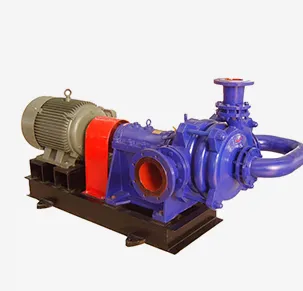Croatian
- Afrikaans
- Albanian
- Amharic
- Arabic
- Armenian
- Azerbaijani
- Basque
- Belarusian
- Bengali
- Bosnian
- Bulgarian
- Catalan
- Cebuano
- Corsican
- Croatian
- Czech
- Danish
- Dutch
- English
- Esperanto
- Estonian
- Finnish
- French
- Frisian
- Galician
- Georgian
- German
- Greek
- Gujarati
- Haitian Creole
- hausa
- hawaiian
- Hebrew
- Hindi
- Miao
- Hungarian
- Icelandic
- igbo
- Indonesian
- irish
- Italian
- Japanese
- Javanese
- Kannada
- kazakh
- Khmer
- Rwandese
- Korean
- Kurdish
- Kyrgyz
- Lao
- Latin
- Latvian
- Lithuanian
- Luxembourgish
- Macedonian
- Malgashi
- Malay
- Malayalam
- Maltese
- Maori
- Marathi
- Mongolian
- Myanmar
- Nepali
- Norwegian
- Norwegian
- Occitan
- Pashto
- Persian
- Polish
- Portuguese
- Punjabi
- Romanian
- Russian
- Samoan
- Scottish Gaelic
- Serbian
- Sesotho
- Shona
- Sindhi
- Sinhala
- Slovak
- Slovenian
- Somali
- Spanish
- Sundanese
- Swahili
- Swedish
- Tagalog
- Tajik
- Tamil
- Tatar
- Telugu
- Thai
- Turkish
- Turkmen
- Ukrainian
- Urdu
- Uighur
- Uzbek
- Vietnamese
- Welsh
- Bantu
- Yiddish
- Yoruba
- Zulu
Telephone: +86 13120555503
Email: frank@cypump.com
stu . 05, 2024 22:07 Back to list
Exploring the Benefits of Submersible Industrial Pumps for Efficient Fluid Management
Submersible Industrial Pumps A Comprehensive Overview
Submersible industrial pumps have become a cornerstone in various sectors, including mining, wastewater treatment, and construction. These versatile and efficient pumps are designed to operate underwater, making them ideal for applications that require the movement of liquids from deep within a reservoir or tank. Their unique construction and functionality offer numerous advantages over traditional pumps, particularly when dealing with challenging environments.
What is a Submersible Pump?
A submersible pump is a type of pump that is driven by an electric motor located at the pump's base. This motor is enclosed in a water-tight housing, allowing it to be submerged in the liquid it is pumping. The pump works by using an impeller to push liquid to the surface, relying on the surrounding pressure to create flow. This design minimizes the risk of cavitation and allows for efficient performance in various fluid handling scenarios.
Key Features and Advantages
1. Efficiency and Power Submersible pumps are known for their energy efficiency. By eliminating the need for suction lift—where the pump is placed above the fluid—these pumps can create higher flow rates and handle larger volumes of liquid. They are particularly effective in applications that involve deep water levels.
2. Versatility Modern submersible pumps can handle a wide range of liquids, including water, sewage, chemical fluids, and even slurry. This versatility makes them suitable for different applications, from municipal wastewater treatment to agricultural irrigation and industrial liquid transfer.
3. Space-Saving Design Because they operate underwater, submersible pumps take up less surface space, which is particularly beneficial in sites with limited access or where exposed pumps might pose operational hazards. Their compact design also simplifies installation and maintenance.
4. Durability Many submersible pumps are constructed from robust materials, such as stainless steel or wear-resistant alloys, allowing them to withstand harsh environments, including corrosive or abrasive conditions. Their enclosed motors also protect against water damage, further enhancing their longevity.
5. Low Noise Levels Unlike traditional pumps that might create significant noise due to their operation above water, submersible pumps tend to operate more quietly, making them preferable for residential areas and noise-sensitive environments.
Applications of Submersible Industrial Pumps
submersible industrial pump

Submersible industrial pumps are utilized across various industries, reflecting their versatility and efficiency
. Here are some notable applications- Wastewater Management In municipal and industrial wastewater treatment facilities, submersible pumps are essential for transporting sewage and effluents. They facilitate the removal of wastewater from collection pits to treatment plants.
- Construction and Dewatering In construction sites, submersible pumps are commonly used for dewatering applications. They remove water from excavated areas, basements, and other low-lying regions to create safe, dry working conditions.
- Mining In the mining industry, submersible pumps are deployed to remove groundwater from mines. Their ability to operate at considerable depths makes them perfect for extracting water from mines that are often flooded.
- Agriculture Farmers utilize submersible pumps for irrigation purposes. These pumps are effective in drawing water from wells and aquifers, ensuring that crops receive adequate hydration for optimal growth.
Maintenance and Care
While submersible pumps are generally robust, regular maintenance is crucial for ensuring their optimal performance and longevity. Key maintenance practices include
- Regular Inspection Periodically check for any signs of wear or damage to seals and motor components. - Cleaning Remove debris and sediment that may accumulate around the pump, as this can hinder performance. - Monitoring Performance Keeping track of the pump’s operational parameters helps identify any anomalies before they lead to failure.
Conclusion
Submersible industrial pumps play a vital role in numerous applications across various industries. Their efficiency, versatility, and compact design make them a preferred choice for many liquid handling tasks. Understanding their features and applications is crucial for businesses and professionals aiming to optimize their fluid management systems. With proper maintenance and care, submersible pumps can deliver reliable performance for years to come, making them an invaluable asset in any industrial setting.
-
Heavy-Duty Mining Sludge Pumps - Wear-Resistant Slurry Handling
NewsAug.02,2025
-
Horizontal Split Case Pump with GPT-4 Turbo | High Efficiency
NewsAug.01,2025
-
ISG Series Pipeline Pump - Chi Yuan Pumps | High Efficiency, Durable Design
NewsAug.01,2025
-
Advanced Flue Gas Desulfurization Pump with GPT-4 Turbo | Durable & Efficient
NewsJul.31,2025
-
ISG Series Vertical Pipeline Pump - Chi Yuan Pumps | Advanced Hydraulic Design&Durable Construction
NewsJul.31,2025
-
ISG Series Vertical Pipeline Pump - Chi Yuan Pumps | Energy Efficient & Low Noise
NewsJul.31,2025










